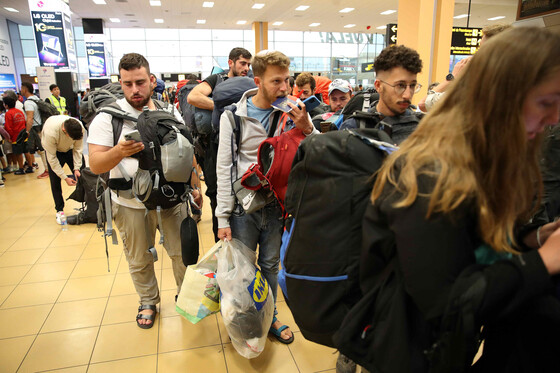
Jerusalem – The Israeli Defense Forces (IDF) have commenced the mobilization of 60,000 reservists in preparation for a major ground offensive on Gaza City, expected to begin within the coming weeks, according to a report from the Financial Times on September 2. This large-scale call-up is part of a broader strategy to solidify Israel's military posture in the region, with sources indicating that the total number of reservists could swell to 120,000 by the end of the year. While the conscripted soldiers are set to lead the charge into the urban heart of the Gaza Strip, these newly activated reservists will play a critical role in providing logistical and rear-echelon support for the assault.
The impending offensive follows a period of escalating military activity. The IDF has already heightened the intensity of its airstrikes and artillery bombardments across the Gaza Strip. In recent days, Israeli forces have been observed establishing forward operating bases on the outskirts of Gaza City, specifically in areas such as Zeitoun and Sabra. The military has also issued a stark warning to the civilian population in northern Gaza, urging them to evacuate to the southern parts of the territory to avoid the coming conflict. This preparation phase intensified on August 29 when the IDF officially designated Gaza City a "dangerous combat zone," announcing the resumption of military operations during daytime hours—a period previously reserved for the delivery of humanitarian aid.
Military analysts are divided on the nature and outcome of the looming battle. Some experts contend that the IDF's overwhelming firepower and superior tactical capabilities will make the physical seizure of Gaza City a manageable task. They anticipate that the Israeli forces will conduct a deliberate, gradual advance, leveraging infantry and armored vehicles to methodically clear the urban area while prioritizing the minimization of Israeli casualties. This approach, they argue, reflects a disciplined and cautious strategy aimed at securing the objective with maximum efficiency.
However, even those who foresee a relatively swift military victory express profound reservations about the operation's strategic significance and its potential for widespread destruction. Amos Harel, a military analyst for the Israeli newspaper Haaretz, voiced a common sentiment that the campaign is unlikely to produce a decisive "moment of victory" that signals the clear defeat of the Palestinian armed group, Hamas. Harel’s assessment suggests a drawn-out, complex conflict where a clear-cut win remains elusive, a reality he believes even Prime Minister Benjamin Netanyahu acknowledges as the war progresses.
The inherent unpredictability of the battlefield further complicates Israel’s mission. Military historian Guy Aviad described the urban landscape of Gaza City as a "four-dimensional battlefield," a term he uses to highlight the multifaceted challenges the IDF will face. Israeli soldiers will have to contend with thousands of Hamas and other armed militants who employ a range of asymmetrical tactics, including surprise attacks, the use of snipers, rocket-propelled grenades, and improvised explosive devices. The unique topography of the city adds another layer of complexity. The remaining multi-story buildings provide excellent vantage points for rooftop snipers, while a dense network of apartments and an extensive system of underground tunnels offer militants a sanctuary from which to launch ambushes. The ground level, with its narrow alleys and vast amounts of rubble from prior Israeli airstrikes, will severely hinder the movement of armored vehicles and ground troops.
Aviad also challenged the notion that Hamas's command and control structure has been dismantled, asserting that the group has retained its ability to reorganize and exercise authority. He emphasized that the operation in Gaza City is "not a simple matter" and cautioned against underestimating the resilience and adaptability of the armed groups operating within the city.
Beyond the initial conquest, the long-term burden of occupation looms large. A former Israeli official pointed out that the IDF will not only need to seize the city but also "hold its ground," a task that presents its own set of significant challenges. Maintaining order, managing a hostile population, and preventing the resurgence of militant activities would require a sustained and costly military presence, potentially trapping Israeli forces in a prolonged and low-intensity conflict. The successful capture of Gaza City, therefore, may mark the beginning of a new and equally difficult phase rather than the end of the war.
[Copyright (c) Global Economic Times. All Rights Reserved.]






























